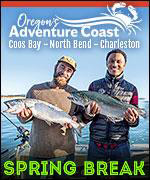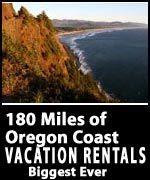Don't Touch Baby Seals Now on Oregon Coast - Pups Also Bring Increase in Killer Whale Sightings (Video)
Published 4/14/24 at 5:55 a.m.
By Oregon Coast Beach Connection staff
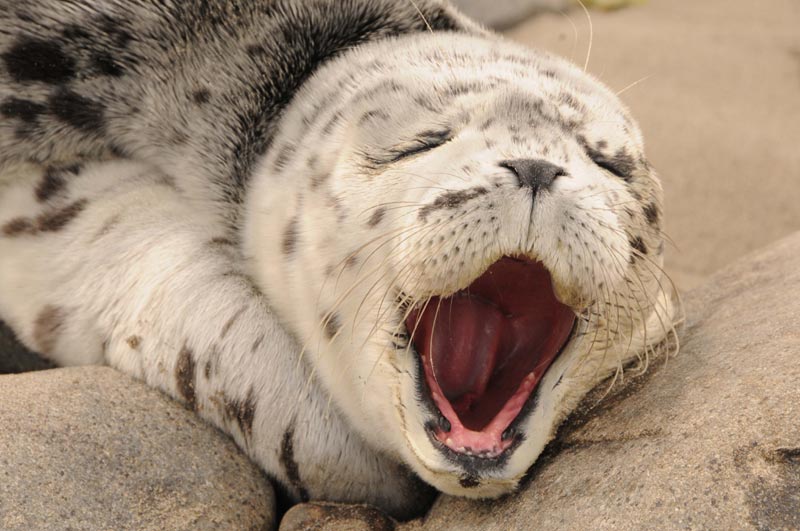
(Oregon Coast) – Once again, Oregon coast officials are saying it's seal pupping season along the beaches, and you should not go near them but instead call authorities. Interestingly enough, seal pup season also heightens your chances of seeing killer whales. (Photo Seaside Aquarium / Tiffany Boothe)
Includes exclusive listings; some specials in winter
In Cannon Beach:
Includes rentals not listed anywhere else
In Manzanita, Wheeler, Rockaway Beach:
Some specials for winter
In Pacific City, Oceanside:
Some specials for winter
In Lincoln City:
Some specials for winter
In Depoe Bay, Gleneden Beach:
Some specials for winter
In Newport:
Look for some specials
In Waldport
Some specials for winter
In Yachats, Florence
Some specials for winter
Southern Oregon Coast Hotels / Lodgings
Reedsport to Brookings, places to stay; winter deals
Seaside Aquarium is putting out the warning that the little ones are starting to arrive, as illustrated by this adorable video the facility has taken. It's not only a bad idea to go near them or try to move one on your own but it's illegal.
However, this is also bringing out the transient orcas to the coastline: some research groups are reasonably certain that killer whales come this direction because of the newly born harbor seals out there. Indeed, orca sightings have picked up considerably.
“Oregon and Washington typically see harbor seals born throughout spring and into late summer, while California may see pups as early as January,” said the aquarium's Tiffany Boothe. “These young animals use time on land to regulate body temperature and rest. However, if a young pup is onshore alone the mother may not return if humans are too close. Thus, wildlife experts suggest giving seal pups plenty of space by observing them from a distance, and while they are absolutely adorable, do not touch them.”
Harbor Seal Pupping SeasonIt that time of year again when we start to see harbor seal pups on our local beaches. Oregon and Washington typically see harbor seals born throughout spring and into late summer, while California may see pups as early as January. These young animals use time on land to regulate body temperature and rest. However, if a young pup is onshore alone the mother may not return if humans are too close. Thus, wildlife experts suggest giving seal pups plenty of space by observing them from a distance, and while they are absolutely adorable, do not touch them. Female seals birth annually after an eleven-month gestation and utilize familiar coastal shores or estuary areas with easy access to water to have their pups. New seals can immediately swim but stay close and ride on their mothers back while they mature. Seal pups often double in size from birth in 4-6 weeks on a regular diet of mother’s milk with 40% milkfat. While the extra layer of fat makes the pups adorable, the pups depend on that stored body fat to survive foraging on their own as they become more independent. Any interference from humans that could cause early separation between newborn pup and mother could be detrimental to the pup’s ability to survive. Marine mammals are protected under the Marine Mammal Protection Act. Under this federal law it is illegal to move, touch, harass, feed, or kill marine mammals including seal pups. Harbor seals live on land for nearly half their lives breeding, molting, resting, and raising their offspring. Molting occurs after pups are weaned and to retain warmth and energy molting seals often stay on land for extended periods of time. Human encroachment and domestic dog interactions are challenges for the health and well-being of both young and mature seals. If you come across a seal pup, please contact the Marine Mammal Stranding Network by calling 1-866-767-6114. Local wildlife officials may post educational signs that encourage the public to keep a safe distance away from the animal while the situation is monitored by experts. Most of the time the animal is healthy and in need of a rest before it rejoins with its mother or re-enters the water. Last year the Seaside Aquarium responded to and placed signs on 21 harbor seal pups all of which successfully left the beach. The Marine Mammal Stranding Network responds to sightings of seal pups and other injured or dead marine mammals (including whales or dolphins). Responders will act as quickly as possible to assess the situation and obtain information and observations about the animal in question. For the northern Oregon and southern Washington coast the Seaside Aquarium is the local responder for the Marine Mammal Stranding Network and can be contacted at 503.738.6211. If a stranded marine mammal is found elsewhere the Marine Mammal Hotline at 1.866-767-6114 and they will contact the appropriate stranding network responder for the area.
Posted by Seaside Aquarium on Thursday, April 11, 2024
One area where you can watch them safely from a distance is sometimes Cape Arago on the south coast, near Coos Bay.
What numbers do you call if you find a stranded seal pup? Oregon State Police non-emergency numbers are good but make sure you do not use 911. On the north Oregon coast and southern Washington coast, call the Seaside Aquarium at 503-738-6211. The Marine Mammal Hotline at 1.800.452.7888 is best for the southern Oregon coast, or all of the state if you cannot remember the other numbers. On the northern Washington coast, the greater West Coast Marine Mammal Stranding Network line at 1.866.767.6114 is your best bet.
For State Police on the northern half of Oregon: 800-442-0776. For the southern half (below Reedsport): 800-442-2068.
Female seals take 11 months to give birth, utilizatng parts of the shoreline or estuaries that are familiar to them, and those with easy access. It is in these waters they have their pups. Seal pups are born already able to swim, and they stick close to mom and even ride on her back.
During their rather tender first few weeks or months of life, they will sometimes rest onshore: they sleep a lot as most babies do. Coming near them often scares the mama seal away, leaving the baby to die in the wild.
“Marine mammals are protected under the Marine Mammal Protection Act,” Boothe said. “Under this federal law it is illegal to move, touch, harass, feed, or kill marine mammals including seal pups. Harbor seals live on land for nearly half their lives breeding, molting, resting, and raising their offspring. Molting occurs after pups are weaned and to retain warmth and energy molting seals often stay on land for extended periods of time. Human encroachment and domestic dog interactions are challenges for the health and well-being of both young and mature seals.”
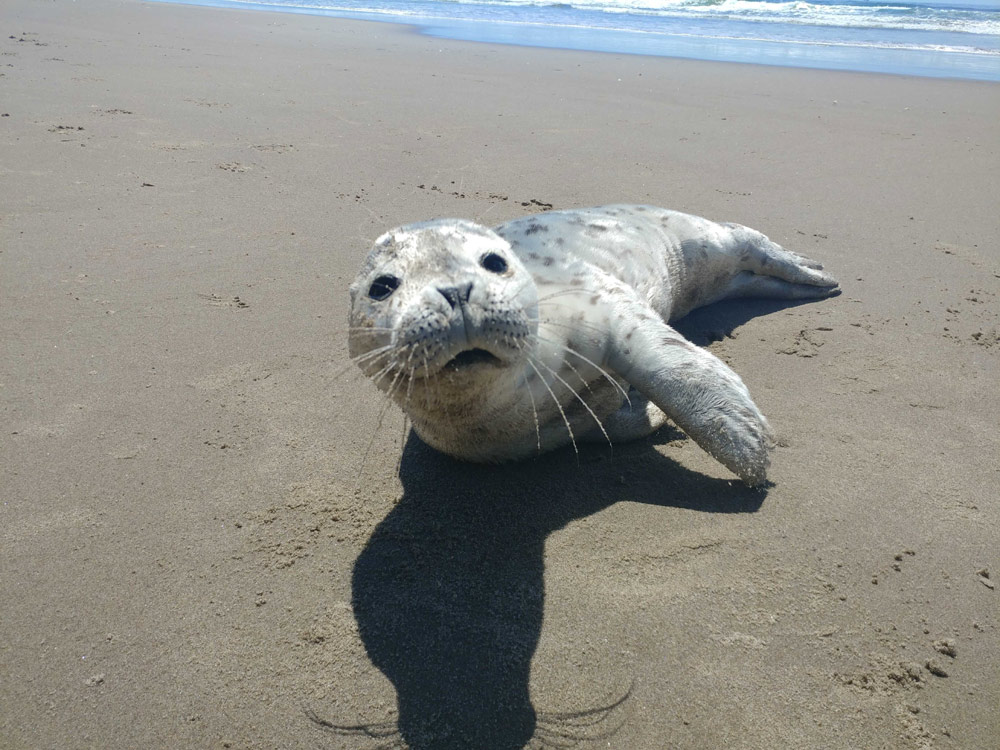
Seaside Aquarium
Seal pups will double in size from four to six weeks old, living on a diet of mother's milk with a whopping 40% milkfat. These portly little critters are even more adorable because of this, but forget the idea of a selfie with them. That could wind up proof of illegal activity.
Whale watch groups on Facebook have been lighting up with orca sightings recently as is often the case in April. Your chances of seeing killer whales on the coast just got bigger, and they often stay around until early summer.
Josh McInnes of the University of British Columbia in Vancouver, B.C. is one of the lead researchers with the Institute for the Oceans and Fisheries Marine Mammal Research Unit, and he runs the orca Facebook page Oregon Coast Killer Whale Monitoring Program.
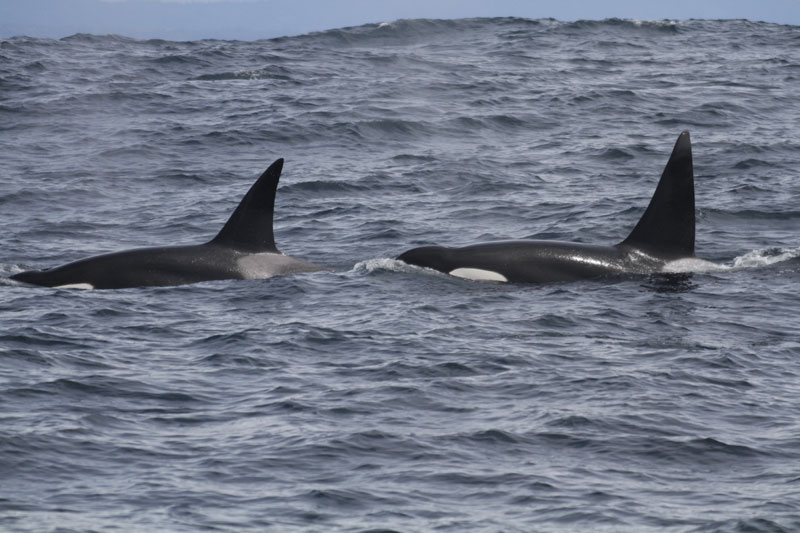
Josh McInnes
McInnes and his colleagues think it has more to do with baby seals than baby gray whales, as has been the thinking for the last two decades.
“During the spring months of April through June harbor seals start to pup off the Oregon coast and during this time we receive more reports of transient killer whales than the rest of the year,” McInnes told Oregon Coast Beach Connection. “This is likely a result of the whales taking advantage of the increased availability of prey.”
Some of the transient whales they've already seen were of the same pod that were documented attacking a mama gray whale her calf near Depoe Bay in 2023.
Oregon Coast Hotels in this area - South Coast Hotels - Oregon Coast Vacation Rentals - Where to eat - Maps - Virtual Tours
Cannon Beach Lodging
Nehalem Bay Lodgings
Manzanita Hotels, Lodging
Three Capes Lodging
Pacific City Hotels, Lodging
Lincoln City Lodging
Depoe Bay Lodging
Newport Lodging
Waldport Lodging
Yachats Lodging
Oregon Coast Vacation Rentals
Oregon Coast Lodging Specials
More About Oregon Coast hotels, lodging.....
More About Oregon Coast Restaurants, Dining.....
 Andre' GW Hagestedt is editor, owner and primary photographer / videographer of Oregon Coast Beach Connection, an online publication that sees over 1 million pageviews per month. He is also author of several books about the coast.
Andre' GW Hagestedt is editor, owner and primary photographer / videographer of Oregon Coast Beach Connection, an online publication that sees over 1 million pageviews per month. He is also author of several books about the coast.
LATEST Related Oregon Coast Articles
Hazardous 'Bump' in Oregon Coast Range Finally Getting Integral FixThe slide area near Seaside will be repaved. Trafficm weather
Latest on Shellfish Fun Along Oregon Coast - Pacific Halibut Angling
Crabbing, mussels, razor clams and ocean fishing. Marine sciences
Coast Guard Crews from Two States Rescue Disabled Vessel Off Oregon Coast
97-foot vessel Defiant reported it was adrift off Newport. Safety
5.8 Quake Rattles Off South Oregon Coast Near Port Orford - No Tsunami Threat
At 9:08 p.m. and was about 8 miles beneath the surface
Bandon Event Lets You 'Eat Like an Otter' on South Oregon Coast
Aug 13 you forage off the beach then enjoy your own lunch. Bandon events
NASA Announces First Evidence of Life on Mars in Possible Biosignature
In a former riverbed billions of years old, they found spots with interesting compounds. Astronomy
Art Show in Florence Brings Out Talent Around Central Oregon Coast
August showing at the Visitors Center promises something beachy. Florence events
SOLVE Cleanup Happens Along Oregon Coast, Inland Sept 20 Through 28
SOLVE is inviting volunteers to take part. Brookings events, Gold Beach events, Port Orford events, Coos Bay events, Bandon events, Florence events, Yachats events, Newport events, Lincoln City events, Rockaway Beach events, Manzanita events, Cannon Beach events, Seaside events, Astoria events
Back to Oregon Coast
Contact Advertise on Oregon Coast Beach Connection
All Content, unless otherwise attributed, copyright Oregon Coast Beach Connection. Unauthorized use or publication is not permitted














